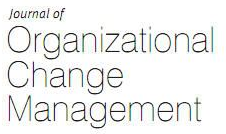Organizational Change In Open Innovation
Full Paper Submission Deadline: December 30, 2017
Guest Editors:
Marta Peris-Ortiz, Universitat Politècnica de València, Spain (mperis@doe.upv.es)
Francisco Liñan , Universidad de Sevilla, Spain (flinan@us.es)
Julia Vincent-Ponroy, IPAG Lab, Ipag Business School, Paris, France (j.vincent@ipag.fr)
Beginning with the pioneering work by Burns and Stalker (1961) up to the almost classic work by Teece, Pisano and Shuen (1997), researchers have tried to understand the logic of forms developed by different organization in order to re-combine their resources in face of innovation. They asked what happens when a company adopts a strategy of open innovation which allows it to go beyond their internal organizational capacities (Carroll and Helfert, 2015; Chesbrough, 2003)? What happens when this new combination of internal and external resources, expected to modify or enhance innovative projects requires changes in managing and organizing?
What organizational changes occur in innovative companies of different productive and service sectors, when they open up to innovation by cooperating with other companies or external professionals? This is a central issue – the central topic of the present call for papers. What changes should take place in the different hierarchical mechanisms or the coordination of the organization when an open innovation strategy emerges? In what way are cooperation and different organizational changes managed in different productive sectors and with the diverse forms of innovation?
Another phenomenon in which the company’s organization and open innovation manifest their elective affinities is the outsourcing of the R&D activities. Several companies outsource their R&D by means of spin-offs or other forms of cooperation. Based on the theory of transaction costs (Williamson, 1985, 2002), this outsourcing can be explained by difficulties in overall management of specific project work. High level of specificity linked to open innovation work makes it difficult to measure and control. The researchers who came up with the agency theory (Jensen and Meckling, 1992) claim that knowledge distributed in the organization among different agents reaches its highest levels of specificity and consequently hinders its measurement by managers who supervise jobs linked to innovation. Due to the reasons mentioned above, both theories explain the outsourcing of several innovation activities and the subsequent cooperation – but they fall short of explaining these organizational changes which are triggered by open innovation.
Finally, most researchers agree that specific cultural climates created by small or medium firms (SME) encourag the processes of internal cooperation and innovation, which encounter greater obstacles in larger and more bureaucratic companies. Smaller organizational nestles and hubs may give rise to unknown forms of open innovation and cooperation between small innovative companies and large corporations, and may pioneer required adjustments of an organizational nature. One of these adjustments (Williamson, 1985) is the creation of intermediate forms of governance between the innovator company and the company which is the customer of the innovation safeguarding the stability and continuity of the relation.
This call for papers is open to research projects which explore the relation between open innovation strategies and organizational changes required for the successful implementation of such strategy. Invited research reports may refer to issues indicated in the above paragraphs or address other related phenomena.
Suggested topics:
- New combination of internal and external resources needed to implement a strategy of open innovation
- Organizational changes that occur in innovative companies of different productive sectors
- Outsorcing of R&D activities by means of spin-offs or other forms of cooperation
- The role of transaction cost theory or agency theory in explaining collaboration in open innovation
- The effect of managing different types of work in open innovation
- The cooperation between small innovative companies and large corporations as in open innovation
- The creation of intermediate forms of governance between cooperating organizations
- State of the art research on open innovation and critical literature review
- A bibliometric study
The deadline for submissions to the special issue is December 30, 2017. Submissions to Journal of Organizational Change Management are made using ScholarOne Manuscripts, the online submission and peer review system. Registration and access is available at http://mc.manuscriptcentral.com/jocm.
Organizational Change in Open Innovation
References:
Burns, T. and Stalker, G. M. (1961): The management of innovation, London: Tavistock.
Carroll, N. and Helfert, M. (2015): Service capabilities within open innovation: Revisiting the applicability of capability maturity models, Journal of Enterprise Information Management, 28, 2, 275-303.
Jensen, M. C. and Meckling, W. H. (1992): Specific and general knowledge and organizational structure. In Contract economics, edited by, L. Werin and H. Wijkander, Oxford UK: Blackwell Publishers.
Johnson, G., Melin, L. and Whittington, R. (2003): Micro strategy and strategizing: Towards an activity-based view. Journal of Management Studies, 40, 1: 3-22.
Teece, D. J., Pisano, G. and Shuen, A. (1997): Dynamic capabilities and strategic management, Strategic Management Journal, 18, 7, 509-533.
Williamson, O. E. (1985): The economic institutions of capitalism. Firms, markets, relational contracting, New York: The Free Press.
Williamson, O. E. (2002): The theory of the firm as a governance structure: from choice to contract, Journal of Economic Perspectives, 16, 3, 171-195.

